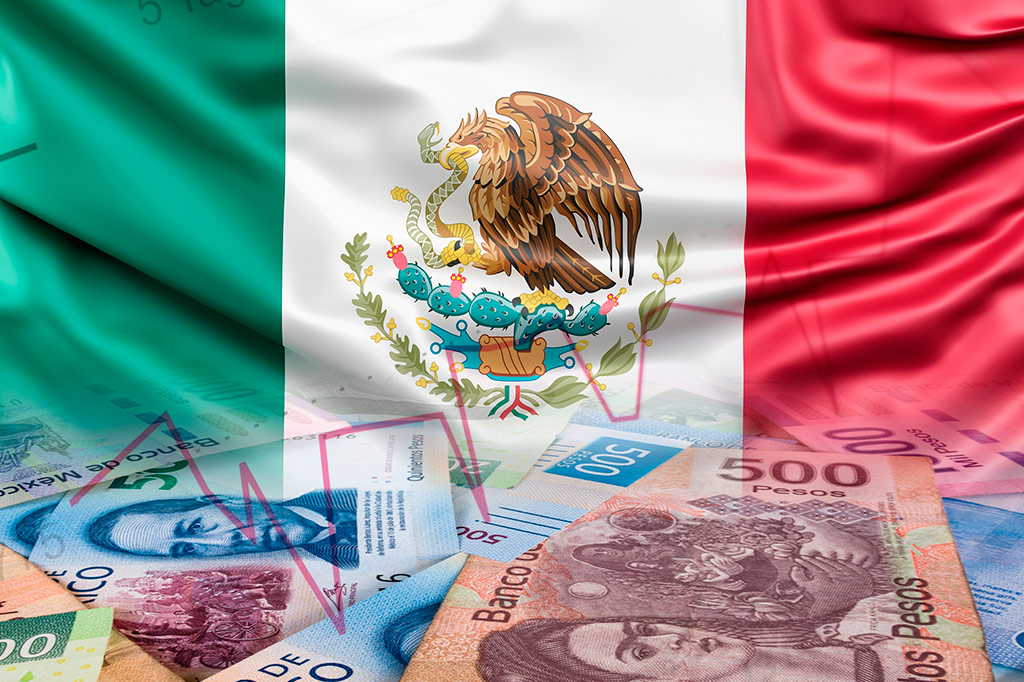Mexico may not yet have the health care system of Denmark, but it does come close to its low growth rate: 2.1 percent.
The International Monetary Fund (IMF) publishes its World Economic Outlook (WEO) in April each year. This document contains forecasts of this institution for the main economic variables of the different countries and an analysis of the recent evolution and future prospects for the world economy. According to the IMF, how does Mexico’s expected economic performance compare with that of other economies, how do we compare with Denmark?
Broadly speaking, the International Monetary Fund expects the world economy to perform relatively poorly. It estimates the world economy to have grown 3.2 percent in 2023 and to maintain that same growth rate in 2024 and 2025. This is lower than the recent historical average.
Inflation is expected to gradually decline from 6.8 percent in 2023 to 5.9 percent in 2024 and 4.5 percent in 2025. This leads to the assumption that central banks in several countries will lower their benchmark interest rates this year, which could help boost economic growth. However, the IMF expects several countries to start raising taxes and reducing public spending to correct the fiscal imbalances that have been incurred recently. This may be the new challenge faced by the world economy in the coming years.

In the particular case of Mexico, the IMF projects growth of 2.4 percent in 2024 and 1.4 percent in 2025. Thus, in 2024 Mexico will grow less than the world average (3.2 percent) and much less than the average of emerging and developing economies, to which it belongs (4.2 percent).
In this regard, it is important to consider that more developed countries tend to grow at a slower rate. These countries are already at the limits of global productivity and producing more means pushing those limits a little further with innovation and technology. In the meanwhile, emerging and developing countries must grow at higher rates to “catch up” with the more economically advanced countries.
Thus, developed countries as a whole are expected to grow by an average of 1.7 percent in 2024. The United States is clearly a special case, as it could grow 2.7 percent this year. The economic dynamism of our northern neighbor is impressive. Mexico may not yet have the health system of Denmark, but it is approaching its low growth rate (2.1 percent), when it should have a growth rate closer to that of emerging and developing countries, which, as mentioned, is expected to be twice as much as the forecast for our country.
Regarding inflation, the world economic outlook document projects that Mexico will close 2024 with 3.5 percent inflation and 3.0 percent by 2025. The IMF forecasts inflation for 36 countries in Latin America and the Caribbean and, in this group, Mexico ranks 16th if these countries are ordered from highest to lowest expected inflation in 2024. In fact, expected inflation for Denmark in 2024 and 2025 is only 1.9 percent.

Possibly, the most relevant indicator for welfare is the growth of Gross Domestic Product (GDP) per capita because it gives us an idea of whether we have more goods and services available considering population growth. In this regard, out of the 32 Latin American and Caribbean countries for which this data is available in the IMF database, Mexico would rank 24th if we consider its GDP per capita growth over the last six years. From 2018 to 2024, Mexico’s GDP per capita would have grown by only 0.8 percent. The comparable figure for Denmark is 9.8 percent (more than 12 times Mexico’s per capita growth).
The World Economic Outlook document shows a relatively low growth overview in 2024, but falling inflation for the global economy. Mexico does resemble Denmark in terms of expected growth by 2024 when it should be more like other emerging countries. It is not so similar in other aspects such as its recent high per capita growth or its low inflation rate.
Author details
Eugenio Gómez Alatorre, Director of the Bachelor’s Degree in Economics at the Universidad Panamericana.








